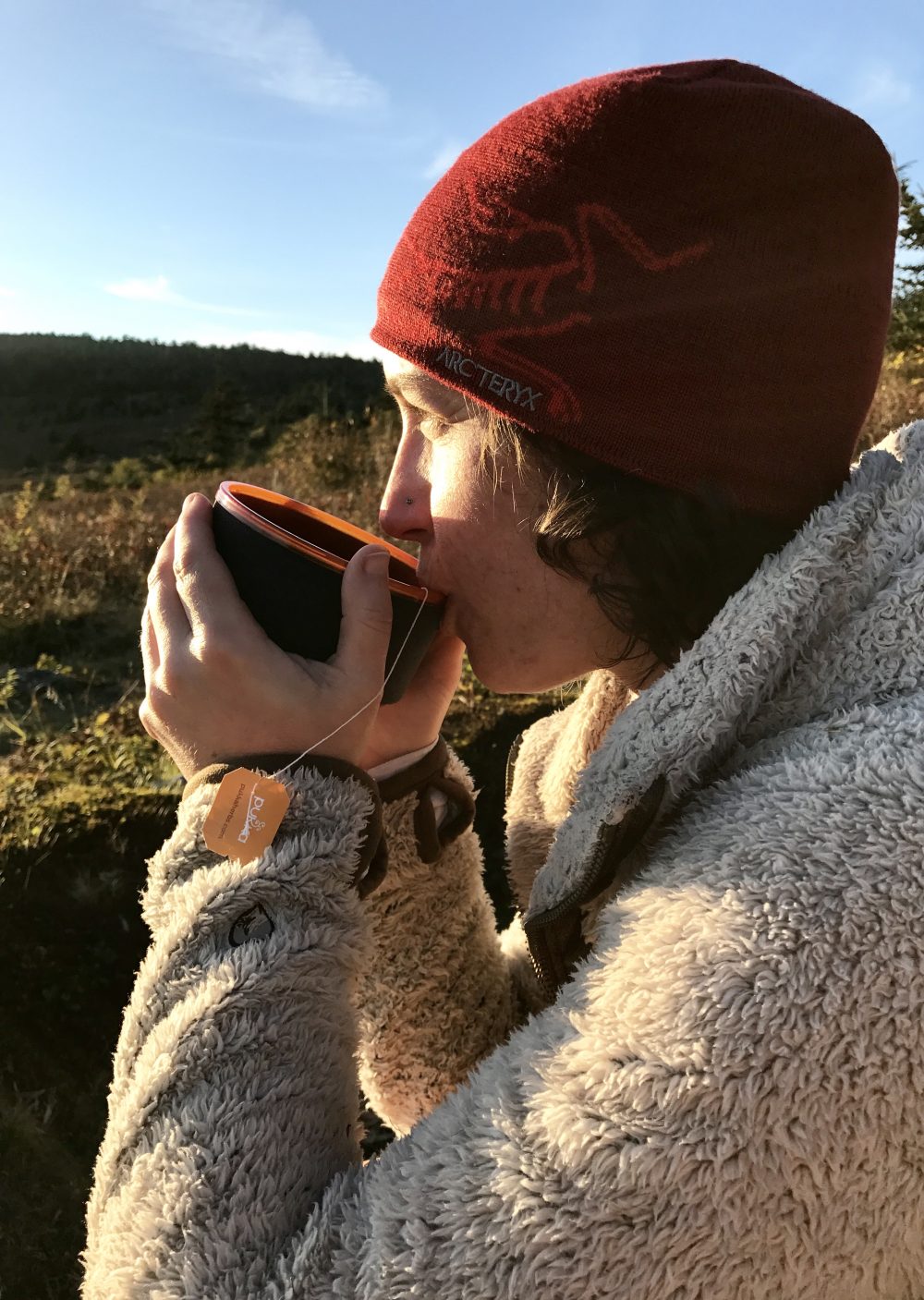This one is not for you lucky, natural human furnaces out there. For my fellow outdoor lovers who, without a heavy duty pair of wool socks (or three) and sexy balaclava to wear, you might turn into a miserable, mountain-made ice cube on the trail.
Let’s assume you’re doing all you can to protect your whole body, including your critical areas where heat escapes, like your head, neck, and feet. My go-to is wool for its thermo-regulating super powers. I literally get wool socks for Christmas every year and not much makes me happier.
In addition to wool and wicking clothing, you can also stoke your inner fire by spicing up your food and beverages on the trail. Here are the delicious, warming spices I don’t camp or backpack without:
Ginger Tea
Ginger tea bags tuck nicely and lightly into a pack. Boil water and steep 2 tea bags for about 3 minutes. Hug both hands around your cup, sip, and feel ginger’s natural fire begin to warm from the inside out. For those new to ginger, it has a spicy, earthy, light lemon taste to it. Enjoy it morning, day-time or before bedtime, whenever you want it.
In the photo above, I’m sipping my tea savoring a slow and steady sunset over the Blue Ridge Mountains (Grayson Highlands). When the sky dimmed, the bite in the air soared in proportion.
How does ginger work? It stimulates circulation and moves the blood, encouraging more oxygen to your blood cells.
So this isn’t a challenge, but if you’re the curious, science project, how-does-it-really-work type like myself, you can put ginger to the test by pouring half a ½ cup of ground ginger into a bath tub with warm water. Lie in the tub for 15 minutes, until you break a gentle sweat. Take your temperature before and after and note any changes to your core temperature. Mine definitely went up (inducing a slight fever and relaxing my muscles a bit). And that’s an external tea bath if you will vs. drinking it internally. Try it for yourself. Drinking the tea, that is. And thank the bioactive compound, 6-gingerol, for its inferno magic.
More reasons to pack ginger on the trail? It soothes a gassy tummy, nausea, and vomiting. Having crystalized ginger is excellent for this in a pinch. I carry this with me whenever I travel, not just on the trail.
Ginger is also anti-septic and loaded with anti-oxidants. Though most notably for being anti-inflammatory, which means if you’ve been moving all day and you’re body is achy, ginger tea is your friend.
Not a fan of ginger by itself? Try a chai tea blend that contains a variety of flavors and other autumn/winter warming spices like ginger, cardamom, cinnamon, black pepper.
Cinnamon
Ever notice how cinnamon makes a grander appearance in apple pies, rolls, and egg nog, during the colder seasons? Cinnamon moves blood too and helps warm you up when you’re feeling damp and cold. Not a fun combo… anyone else ever lived in Seattle November through May? Can I get an Amen? With cinnamon being a familiar flavor, it’s a bit of an easier one to jump onboard with. Bring a small spice container in your back pack and make sure cinnamon is one of them.
Add it to your morning oats or pancakes, atop peanut butter banana toast. Sprinkle on fire-roasted sweet potatoes or pumpkin; or halved plums cooked over a grill grate. Add to your hot chocolate with a dash of cayenne for a Mayan chocolate-flavored treat. And if you’re interested in the savory route, search middle eastern and Indian cuisines for recipe ideas.
Peppers
Some like it hot. For you, add one or more of these ground peppers to your travel spice jar: cayenne, black pepper, red pepper flakes, or an Aleppo pepper. Spice up your meals to your heart’s content. Or, until your sinuses are free and clear (that’s my style).
Make sure sea salt is in your spice pack, too! Spices may be the very thing that brings a meal up a notch, makes you give thanks multiple times in one sitting, sleep sounder that night, and stay warmer under the most stunning, chilly, starry mountain sky you’ve ever seen.
